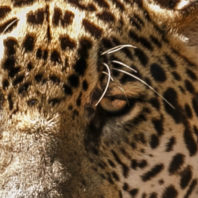
Research


WSU@Prosser

Stopping the blighters

Peace for the wounded warrior
Since the earliest days of the republic, Native Americans have stepped up to defend the United States at higher rates than any other ethnic group.
From General Washington’s inclusion of Tuscarora and Oneida warriors at Valley Forge, through the world wars and Vietnam to today’s conflicts in the Middle East, Native Americans continue to answer their cultural calling to serve.
Traditionally, these soldiers were welcomed home with healing ceremonies that helped reintegrate them with the tribe and wider society. Compassionate medicine men, and women, used time-honored practices to mend the emotional, spiritual, and physical trauma of war.
“Unfortunately, the U.S. government banned Native religious ceremonies … » More …

Gallery: Wildlife of Honduras
WSU environmental biology doctoral student Travis King joined a team of biologists in 2017 to monitor wildlife in the remote region of La Mosquitia in Honduras, home to the newly-discovery “City of the Lost Monkey God.”
Travis and his colleagues in Conservation International and the Honduran government used motion-activated camera traps, hair collecting traps, and other methods to identify the wild animals in this untamed region. Below are some of the images that King brought back.
Read more about Travis and his research in “To catch a cat.”

To catch a cat
Trekking through one of the largest unexplored rainforests in the world, La Mosquitia in Honduras, Travis King set up traps last spring to catch jaguars—or whatever other animal came into range of the cameras.
King, an environmental science graduate student at Washington State University, was one of twelve biologists conducting the first biological survey of the area known as La Ciudad Blanca or the Lost City of the Monkey God, astounding ruins first identified in 2012.
It was already familiar work for King, who has used remote-sensing camera traps and other methods to identify the behavior and distribution of elusive big cats … » More …
Going postal
While digital communication has made a lot of things easier—like video calling someone on the other side of the world—it has made collecting public opinion and behavior data more challenging.
Government agencies rely on that data from censuses, public opinion, and behavior surveys to make extensive policy and financial decisions that impact quality of life, such as healthcare measures that curb smoking.
Don Dillman, a Washington State University Regents Professor in sociology and internationally renowned survey methodologist, has dedicated his career to improving the design of surveys to collect that information.
When he started his career in the 1970s, he had to worry about … » More …

Space farming
Surviving the challenges of deep space exploration could rely as much on botany as astrophysics.
NASA sees plants not only as potential food sources aboard future spacecraft but as natural oxygen producers. The space agency is preparing for its first in-depth study of how growth and development of plants is affected by gravity, or more specifically the lack of it.
“The overall significance is what it could mean for space exploration,” says Norman G. Lewis, a Regents professor at Washington State University’s Institute of Biological Chemistry and principal investigator for the NASA-funded study. “Whether it’s colonizing planets, establishing a station, … » More …

Reading the benefits of tea leaves
Much of what is known, scientifically, about the arthritis-fighting benefits of green tea has in one way or another come from Salah-uddin Ahmed and his research group.
It was Ahmed who helped establish that a phytochemical found in green tea essentially halts the progression of rheumatoid arthritis in lab rats.
It also was Ahmed who helped pinpoint where in the disease’s progression that the phytochemical, known as epigallocatechin-3-gallate or simply EGCG for short, is able to combat further degradation without blocking other cellular functions.
Now, with scientific evidence supporting green tea’s health benefits continuing to pile up, Ahmed hopes the research he and his … » More …
The glassblowers
Glass is a snob, and that’s a good thing for science. For the most part, glass doesn’t interact with other substances. Essentially inert, glass is perfect for containing the otherwise uncontainable: strong acids, bases, and solvents.
Glass is, of course, also fragile. That’s why Norbert Kruse, a chemical engineer at WSU, had to take a glassblowing class when he was a chemistry student in Berlin in the early 1970s.
“We had to do our own repairs!” Kruse recalls. These days, researchers at WSU don’t have to know glassblowing to keep their labs running. Scientific glassblower Aaron Babino takes care of that.
WSU contracts with Babino, … » More …
